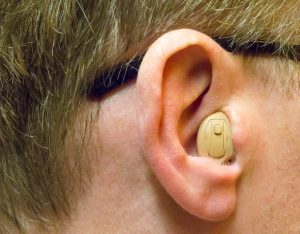
Hearing loss occurs when some part of the ear or brain that controls sound isn’t functioning normally.
We have talked plenty about hearing loss on this blog page, but have you ever wondered how hearing works in the first place? The ear is a very complex part of the body and is always working to ensure that we can hear and interpret sound. Hearing loss occurs when some part of the ear or brain isn’t functioning normally. Broken down by the parts of the ear, here is how hearing works.
Outer Ear
The outer ear is made up of two parts: the Pinna and the Ear Canal. The Pinna is soft tissue that makes up majority of the visible part of the ear. It helps to shape sound so that the brain can determine where the sounds are coming from. The Ear Canal is the actual pathway that directs sound towards the middle ear.
Middle Ear
The middle ear begins with the Eardrum, which vibrates when sound waves pass through it. The Eardrum is connected to three small bones called the Ossicles, which vibrate along with the Eardrum. The last of these three bones, known as the Stapes, is what passes the sound vibrations along to the Inner Ear.
Inner Ear
The Cochlea is a part of the inner ear and is what actually converts sound vibrations into nerve signals using something called hair cells. DIfferent hair cells respond to different sound pitches. The currents that are produced in the Cochlea are transmitted to the auditory nerve which passes through several stations in the Brainstem before reaching the Auditory Cortex. The Auditory Cortex is the part of the brain that interprets and makes sense of sound.
The Vestibule
The Vestibule contains the Semicircular Canals, which is what provides us with our sense of direction, balance, and space. Problems within the Vestibule can cause hearing problems such as Tinnitus which produces a constant ringing sound in our ears. This not only affects our hearing, but can also affect our balance as well.
Contact Bay Area Audiology Today!
Ready to change the way you look at hearing loss? Our Doctor of Audiology, Dr. Trisha A. Bents Muth, is exceptionally experienced in the art of audiology, and is dedicated to providing the absolute best solutions. Bay Area Audiology has been working to give patients a comfortable environment, with thorough evaluations. We are independently owned, and unbiased when it comes to finding you the care you need.
You can always come into the office, or contact us in advance to set up an appointment. We also provide updates on our social media websites. You can check out our Facebook, Twitter,
Google+, LinkedIn, and Pinterest to keep up with Bay Area Audiology.
Don’t hesitate–we can help.
